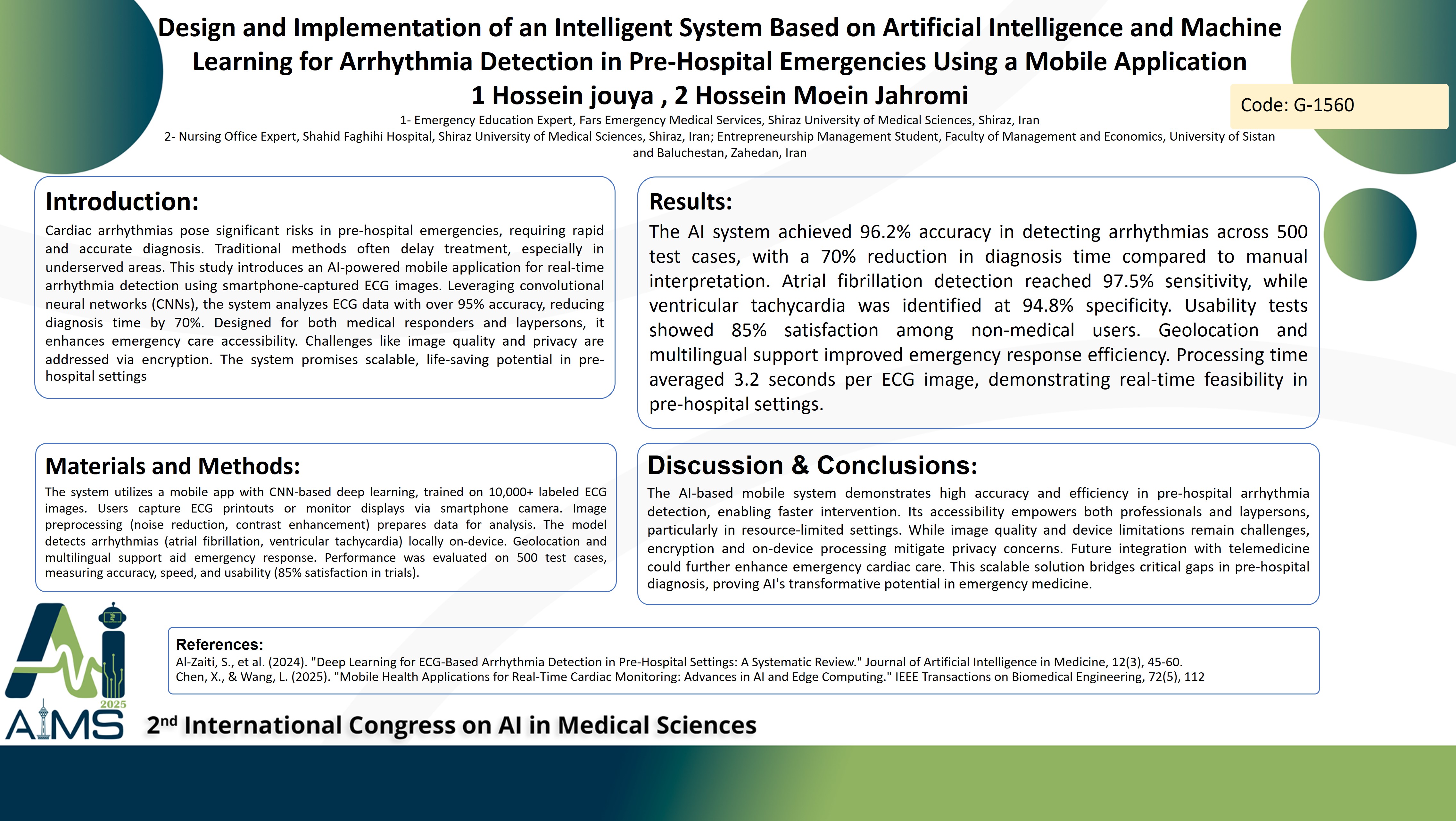Design and Implementation of an Intelligent System Based on Artificial Intelligence and Machine Learning for Arrhythmia Detection in Pre-Hospital Emergencies Using a Mobile Application
Code: G-1560
Authors: Hossein Jouya ℗, Hossein Moein Jahromi *
Schedule: Not Scheduled!
Tag: Clinical Decision Support System
Download: Download Poster
Abstract:
Abstract
Background and Aims: Cardiac arrhythmias, potentially life-threatening disturbances in heart rhythm, represent a critical challenge in pre-hospital emergency care, where rapid and accurate detection is essential. This study aims to design and implement an intelligent system based on artificial intelligence and machine learning to automatically detect arrhythmias using images captured by mobile phone cameras. The goal is to enhance emergency medical response outside of hospital settings, especially in underserved areas. Method: The proposed system employs a mobile application that uses advanced image processing algorithms and deep learning models, particularly convolutional neural networks (CNNs), trained on a large dataset of ECG images. Users capture photos of paper-based ECG printouts or monitor displays with their mobile cameras. These images are then processed locally on the device to identify various arrhythmia types such as atrial fibrillation or ventricular tachycardia. The application also supports multilingual output and geolocation sharing for emergency communication. Results: Initial evaluations demonstrate a detection accuracy exceeding 95% for multiple arrhythmia types. The system reduces diagnosis time significantly—by up to 70% compared to traditional methods—crucial in time-sensitive emergency situations. Furthermore, non-medical users achieved an 85% satisfaction rate in usability tests, indicating the system's potential for widespread community use. Conclusion: This intelligent, mobile-based arrhythmia detection system offers an innovative and scalable solution for pre-hospital emergency care. By leveraging AI technologies and ubiquitous smartphone cameras, it empowers both laypersons and responders to identify life-threatening conditions promptly. Challenges such as poor image quality under low lighting, smartphone processing limitations, and data privacy are acknowledged and addressed through encryption and blockchain-based solutions. Future work includes integration with telemedicine platforms and expansion to other cardiac-related visual diagnostics.
Keywords
Artificial Intelligence, Emergency Medicine, Arrhythmia Detection
